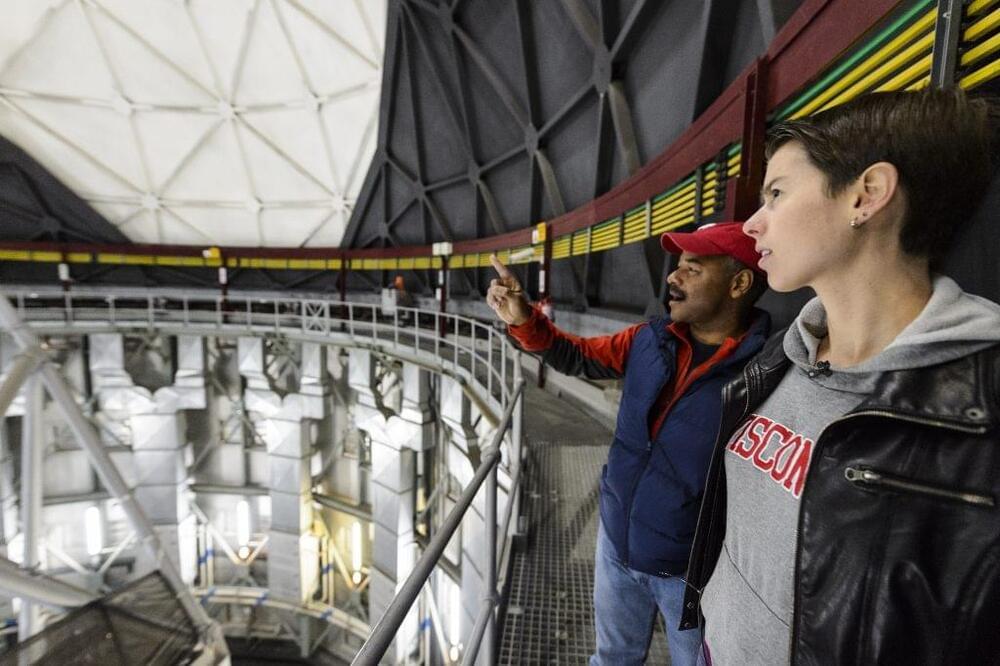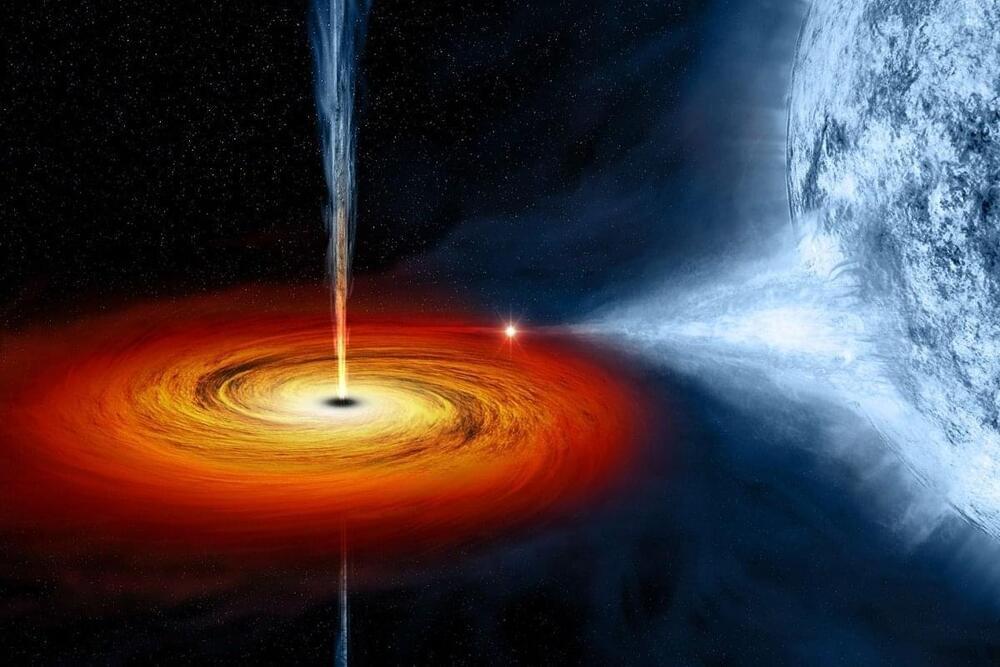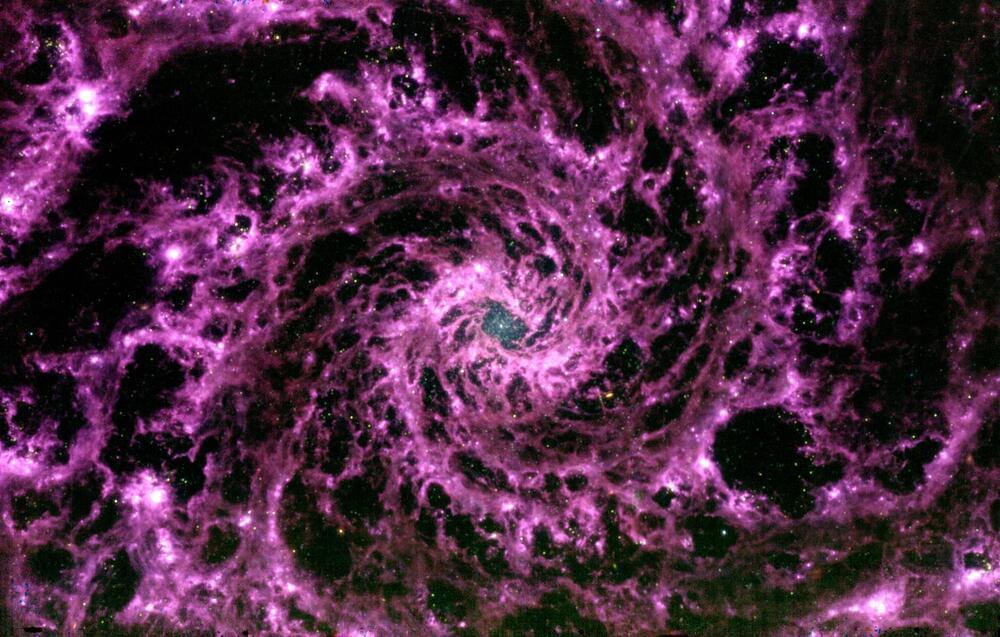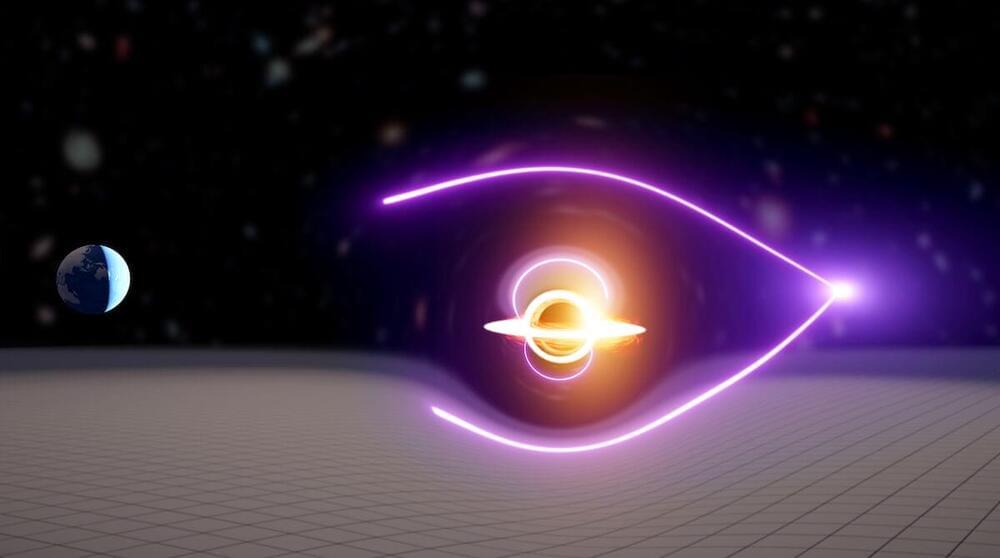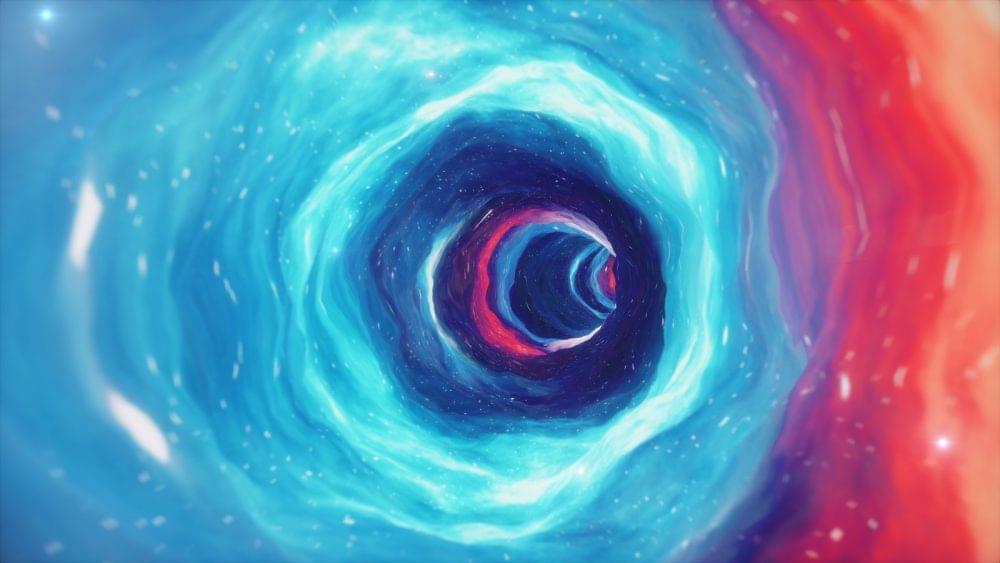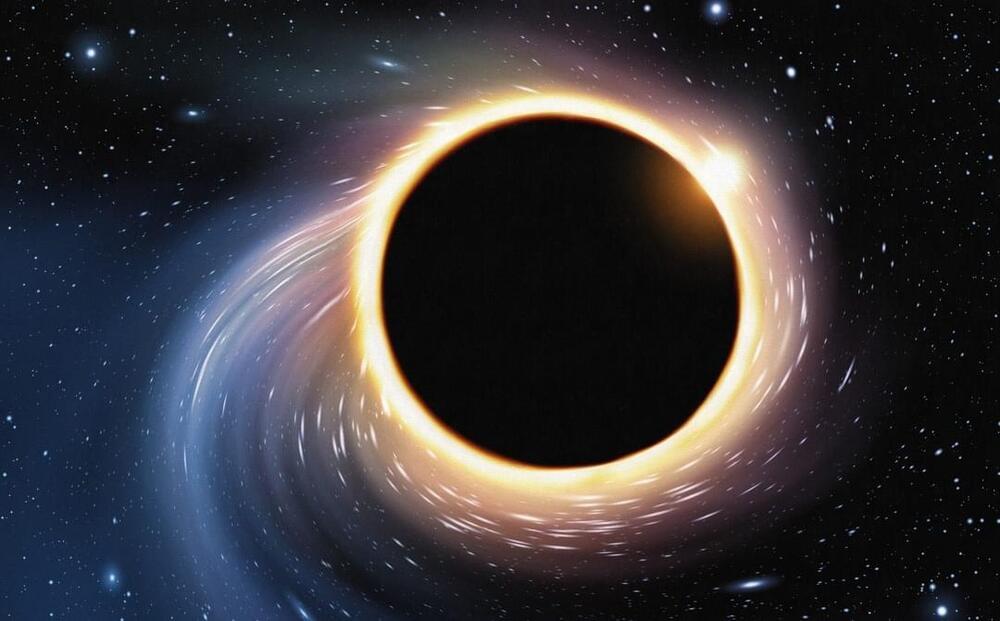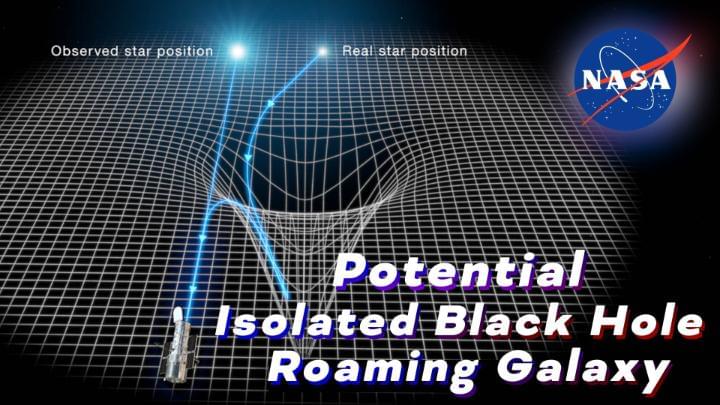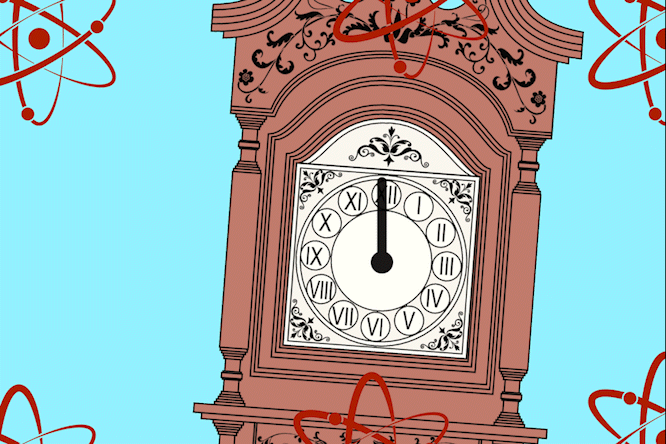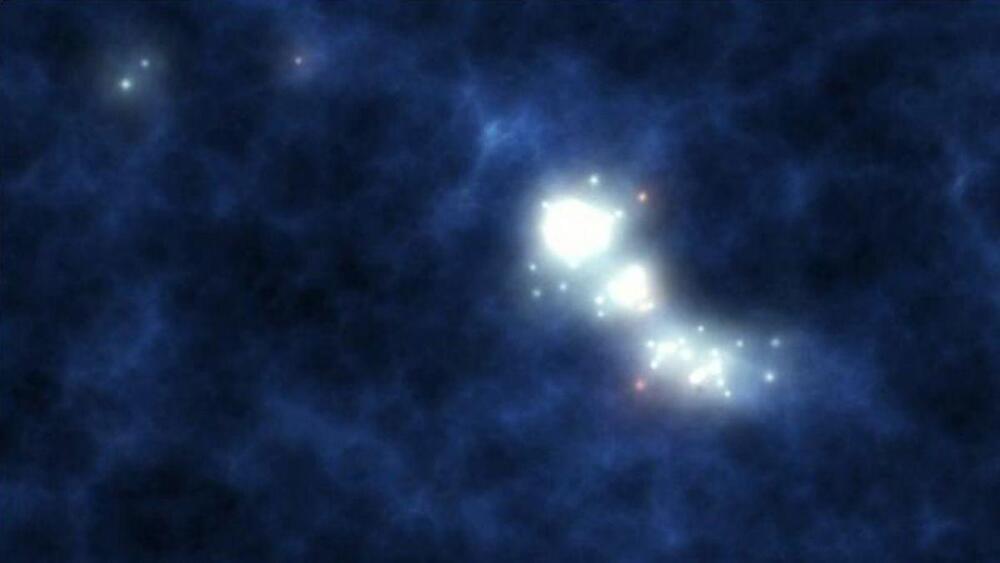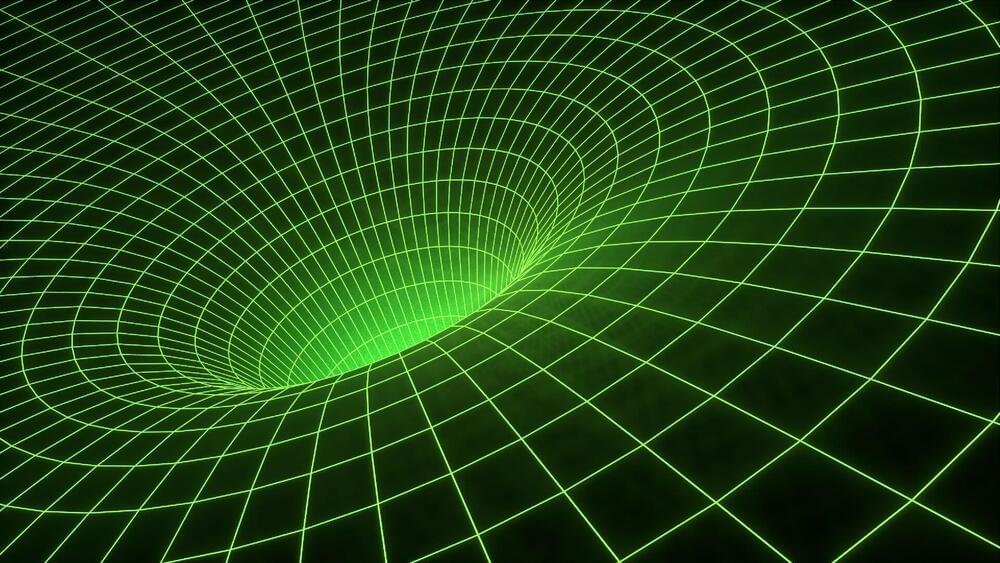Archive for the ‘cosmology’ category: Page 194
Jul 25, 2022
AI asked to show an image from inside a black hole
Posted by Genevieve Klien in categories: cosmology, robotics/AI
A new artificial intelligence system has been asked to produce an image from inside of a black hole, and the results are stunning.
Jul 24, 2022
Amazing James Webb image looks like a wormhole
Posted by Genevieve Klien in category: cosmology
Early data from the James Webb Space Telescope is already starting to come in, with exciting finds like views of Jupiter and a potential sighting of the most distant galaxy ever observed. But there’s a lot more Webb data being shared, and much of it is publicly available through the Space Telescope Science Institute’s MAST archive. That means enterprising astronomers are already digging through James Webb data to perform their own analyses, and have created some amazing visuals.
Gabriel Brammer, an associate professor at the University of Copenhagen, composed and shared this incredible and faintly terrifying image on Twitter. It shows the galaxy Messier 74, captured in the mid-infrared range by Webb’s MIRI instrument as part of the PHANGS-JWST project.
“Let’s just see what JWST observed yesterday …” Brammer wrote on Twitter. Then, echoing all of our sentiments, “Oh, good god.”
Jul 24, 2022
Astronomers find ‘Goldilocks’ black hole
Posted by Shubham Ghosh Roy in categories: cosmology, physics
Last year, scientists used gravitational waves to detect an elusive intermediate-mass black hole for the first time. Now, Australian astronomers have spotted another – this time using gamma-ray bursts.
Black holes are formed when massive stars reach the end of their lives and collapse under their own gravity. But they aren’t all the same – stellar mass black holes are small, just a few times the mass of our Sun, while supermassive black holes at the hearts of galaxy are enormous, with masses millions or even billions of times greater than our sun.
Intermediate mass black holes are the missing link between these two populations, thought to span between 100 and 100,000 solar masses. The black hole discovered in 2020 was 142 solar masses – while this newly discovered monster is on the other end of the scale, at approximately 55,000 solar masses.
Jul 24, 2022
Are Wormholes Massive Cosmic Tunnels Through Which Spacecraft Can Travel?
Posted by Shubham Ghosh Roy in categories: cosmology, space travel
Two scientific teams have proposed new models of wormholes, one focusing on microscopic wormholes and one focusing on traversible ones for human travel.
Jul 24, 2022
Have you ever wanted to hear what a Black Hole sounds like? Well, here is your chance
Posted by Shubham Ghosh Roy in category: cosmology
Jul 24, 2022
NASA’s Hubble Space Telescope
Posted by Shubham Ghosh Roy in categories: cosmology, physics
It’s estimated that about 100 million black holes roam around our Milky Way Galaxy — and for the first time ever, astronomers now believe they may have precisely measured the mass of an isolated black hole with Hubble.
Roaming black holes are born from rare, monstrous stars that are at least 20 times more massive than our Sun. After these stars explode in a supernova, the remnant core is crushed by gravity into a black hole. Because this self-detonation isn’t perfectly symmetrical, the black hole might get “kicked” and careen through our galaxy.
Astronomers believe that the isolated black hole measured by Hubble is traveling across the Milky Way at 100,000 miles per hour (160,000 kph). That’s fast enough to get from Earth to the Moon in less than three hours!
Jul 24, 2022
Physicists harness quantum “time reversal” to measure vibrating atoms
Posted by Shubham Ghosh Roy in categories: cosmology, particle physics, quantum physics
MIT physicists have significantly amplified quantum changes in atomic vibrations, allowing them to exclude noise from the classical world. This advance may allow them to measure these atomic oscillations, and how they evolve over time, and ultimately hone the precision of atomic clocks and of quantum sensors for detecting dark matter or gravitational waves.
Jul 23, 2022
Oldest stars in the universe may be revealed with new technique
Posted by Genevieve Klien in categories: cosmology, particle physics
And it would not require the James Webb Space Telescope.
Astronomers think that a new observation technique relying on the detection of faint radio signals will allow them to see the first stars that formed in the middle of thick hydrogen clouds shortly after the birth of the universe.
The technique, introduced in a new paper, looks for a type of electromagnetic radiation signature known as the 21-centimeter line, which was emitted by hydrogen atoms that filled the young universe in the first hundreds of thousands of years after the Big Bang.
Jul 22, 2022
Supermassive black hole influences star formation
Posted by Saúl Morales Rodriguéz in categories: cosmology, particle physics
A European team of astronomers led by Professor Kalliopi Dasyra of the National and Kapodistrian University of Athens, Greece, under participation of Dr. Thomas Bisbas, University of Cologne modeled several emission lines in Atacama Large Millimeter Array (ALMA) and Very Large Telescope (VLT) observations to measure the gas pressure in both jet-impacted clouds and ambient clouds. With these unprecedented measurements, published recently in Nature Astronomy, they discovered that the jets significantly change the internal and external pressure of molecular clouds in their path.
Depending on which of the two pressures changes the most, both compression of clouds and triggering of star formation and dissipation of clouds and delaying of star formation are possible in the same galaxy. “Our results show that supermassive black holes, even though they are located at the centers of galaxies, could affect star formation in a galaxy-wide manner,” said Professor Dasyra. “Studying the impact of pressure changes in the stability of clouds was key to the success of this project. Once few stars actually form in a wind, it is usually very hard to detect their signal on top of the signal of all other stars in the galaxy hosting the wind.”
It is believed that supermassive black holes lie at the centers of most galaxies in our universe. When particles that were infalling onto these black holes are trapped by magnetic fields, they can be ejected outwards and travel far inside galaxies in the form of enormous and powerful jets of plasma. These jets are often perpendicular to galactic disks. In IC 5,063 however, a galaxy 156 million light years away, the jets are actually propagating within the disk, interacting with cold and dense molecular gas clouds. From this interaction, compression of jet-impacted clouds is theorized to be possible, leading to gravitational instabilities and eventually star formation due to the gas condensation.
